Autopilot: Action - Eject from Journey
Contacts that enter this action will be immediately ejected (i.e. removed) from the Journey.
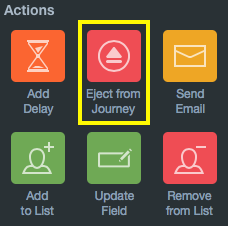
When should I eject contacts from a Journey?
You should eject contacts when it's no longer appropriate to communicate with them in the context of that Journey. This is generally because they:
- completed the Journey's goal (e.g. they became a customer); or
- are no longer eligible to remain in the Journey (e.g. a member of your sales team determined that they are a "junk" lead).
How does ejection work?
The Eject from Journey action doesn't have any configuration; the only decision you need to make is where to place it in your Journey. To keep things as simple as possible, we recommend connecting the Eject from Journey action to a trigger.
For example, let's say you had the following email nurture, and your goal was to get contacts to signup to try your service:
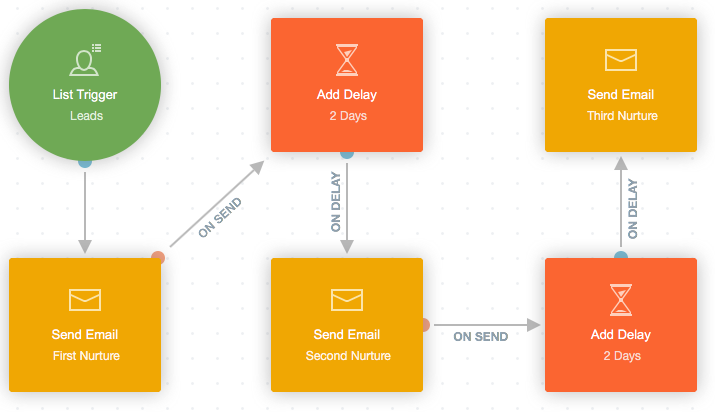
Once contacts complete your signup form, thus completing the Journey's goal, it makes sense to remove them from the Journey. To do this, you would add a Form Submitted trigger and connect it to the Eject from Journey action:
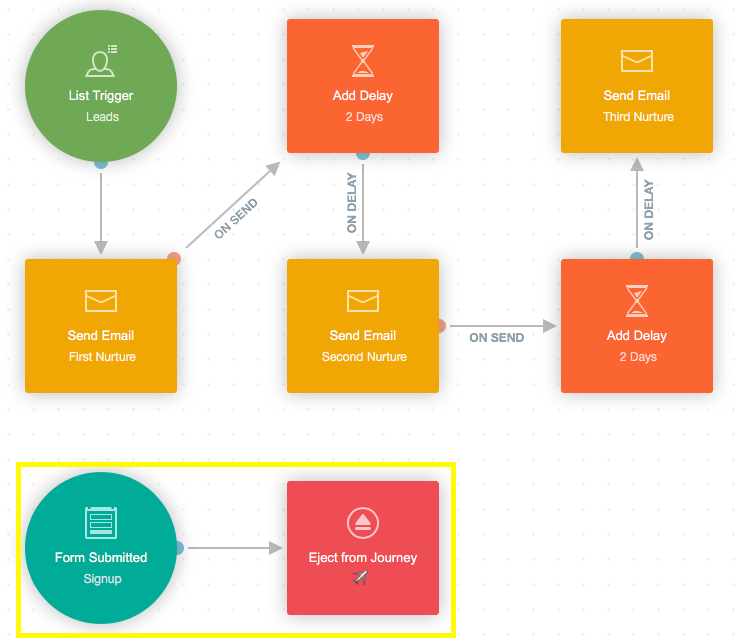
In situations such as the above, we recommend creating a separate Journey to communicate with the contact once they submit the form. However, if you wish to include other actions (e.g. a confirmation email) after the trigger in the same Journey, please ensure that you place them sequentially before the Eject from Journey action to ensure that they run before the contact is removed from the Journey:

In some cases you might have multiple reasons why you would like to eject a contact from your Journey. In cases like this, we recommend using the Smart Segment Trigger. For example, the smart segment below includes contacts whose:
- status is closed or junk; or
- have submitted the signup form.

Next, configure the Smart Segment Trigger to add contacts to the Journey who enter the segment in the future:
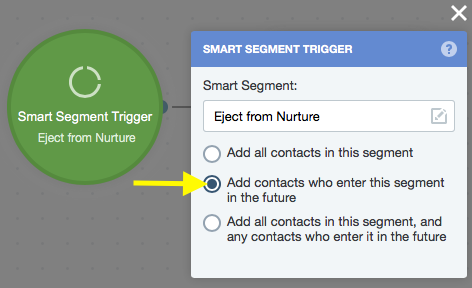
Then connect the Smart Segment Trigger to the Eject from Journey action:
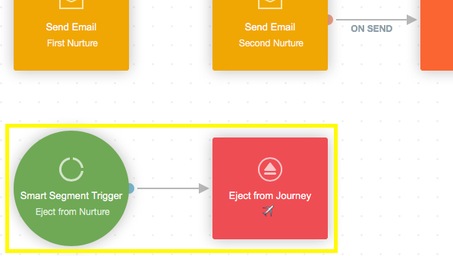
How can I keep track of which contacts were ejected from a particular Journey?
To do this you could:
- add them to a list; and / or
As noted above, to ensure that these actions occur before the contact is ejected, please place them sequentially before the Eject from Journey action:

The Contact Activity Feed also shows which Journeys a contact has been ejected from:

Can contacts re-enter Journeys that they were ejected from?
Yes. Contacts can enter Journeys multiple times via any trigger (including the same trigger) as long as they meet a trigger's criteria.
While it will often make sense for a contact to be able to re-enter a Journey that they have been ejected from, if you want to prevent this, you could add them to an exclusion list prior to ejecting them, and then use the Is on List or Segment condition after the trigger to check if they are on that list:
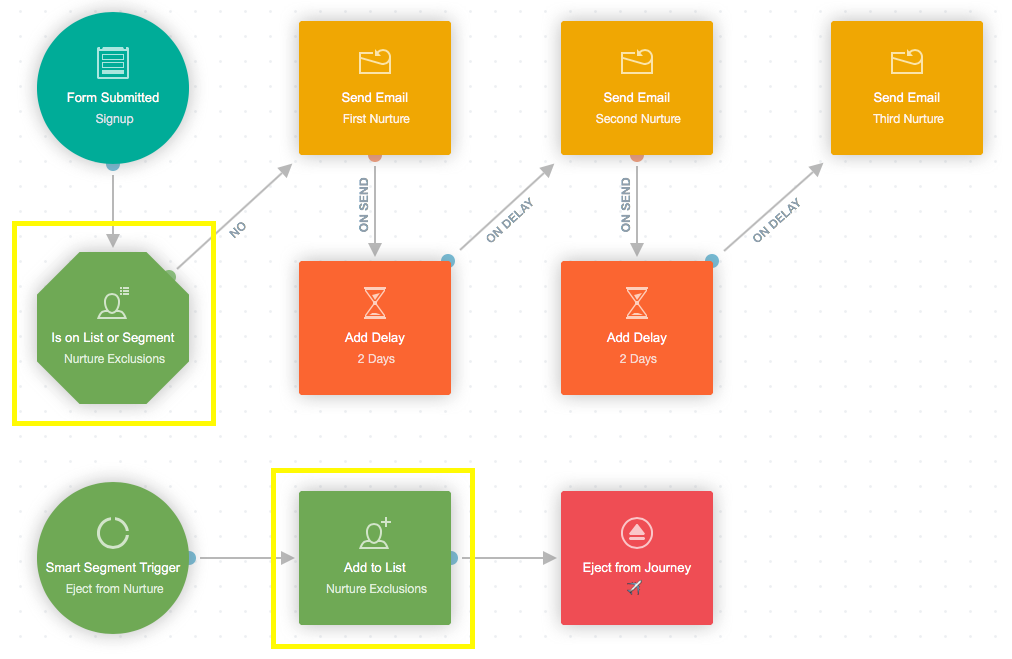
If I'm using ejection in my Journey, would I ever need to also use conditions?
Ejection is designed to remove contacts from a Journey that are already flowing through it. If there are contacts that you would never want to flow through your Journey in the first place, you should use a condition at the beginning of the Journey to prevent them from reaching any actions.
For example, let's say you don't want to send nurture emails to your competitors if they signup to try your service. In this case you would create a smart segment containing your competitors and then place an Is on List or Segment condition prior to the first email. This will prevent your competitors from ever flowing into the first Send Email action:
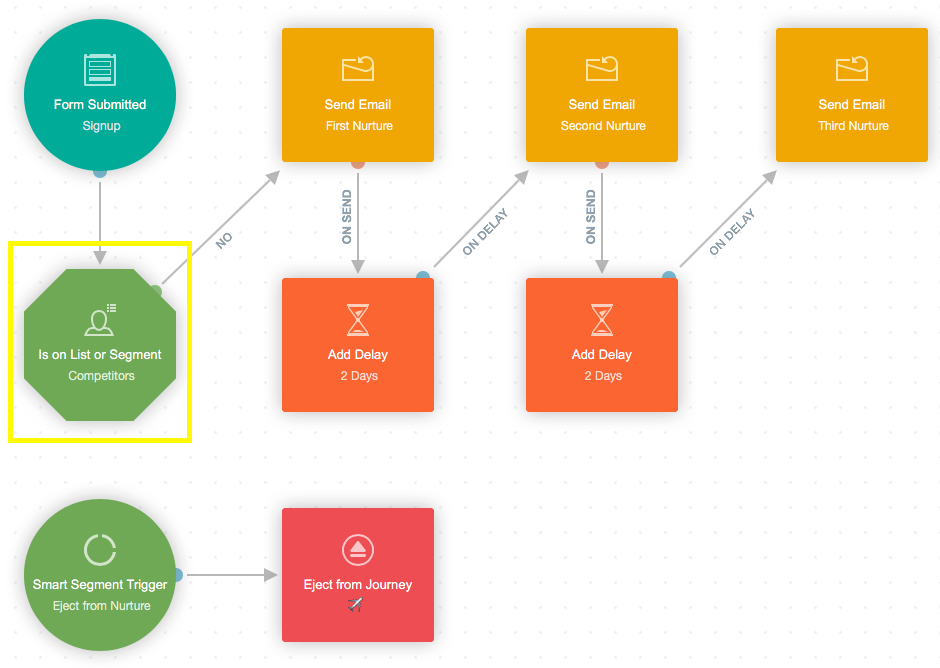
You will see in the above example that the Journey still includes the ejection component. This:
- accounts for the fact that an event may occur after the contact enters the Journey that causes them to meet your ejection criteria (e.g. they begin working for a competitor); and
- prevents you from having to place a condition prior to every action.
How can I ensure that only contacts already flowing through a Journey are ejected?
In some cases a contact that wasn't already flowing through the Journey may enter it via the trigger connected to the Eject from Journey action. For example, in the Journey below, imagine a contact submits the signup form, but is not on the "Leads" list and therefore isn't already flowing through the Journey:
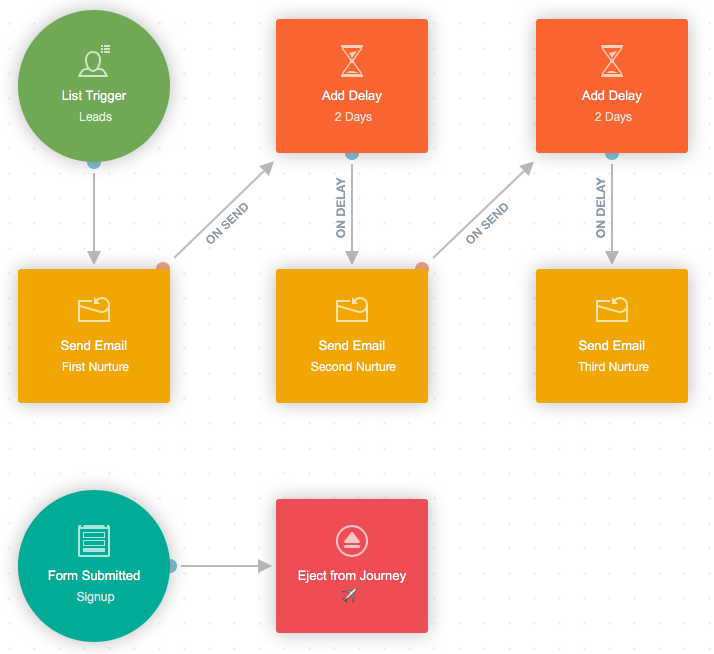
So while they were technically in the Journey (because they just entered it via the Form Submitted trigger), and were therefore able to be ejected from it, they weren't already flowing through the Journey in the sense that they were being nurtured.
Because contacts can re-enter Journeys that they have been ejected from (see above), there is no harm in ejecting them in this context. However, if you believe this will cause confusion amongst your team (particularly since the contact will show as being ejected from the Journey in their Activity Feed), then you could re-structure this Journey in one of two ways to prevent this:
1. Replace the existing trigger with a Smart Segment Trigger
The Smart Segment Trigger allows you to narrow down the contacts that enter the Eject from Journey action to those contacts already in the Journey. In this approach you would create a smart segment refined by those contacts on the "Leads" list that have also submitted the signup form:
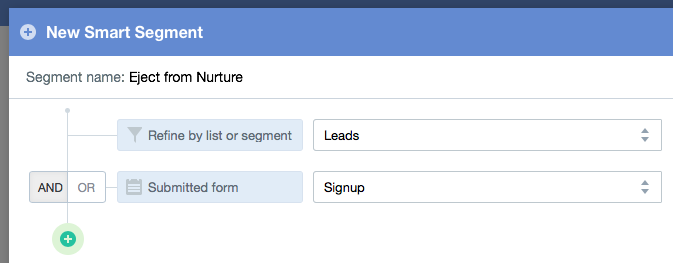
Then replace the Form Submitted trigger with the Smart Segment Trigger:

Remember to set the trigger to add contacts to the Journey who enter the segment in the future:
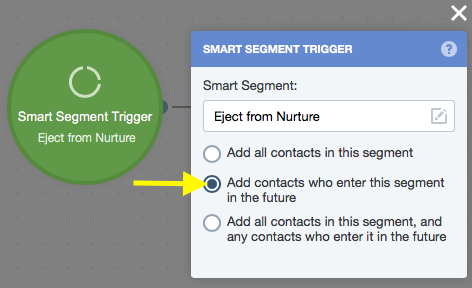
2. Add a condition before the Eject from Journey action
In this approach you would add the Is on List or Segment condition after the Form Submitted trigger to check if the contact is on the "Leads" list prior to ejecting them:
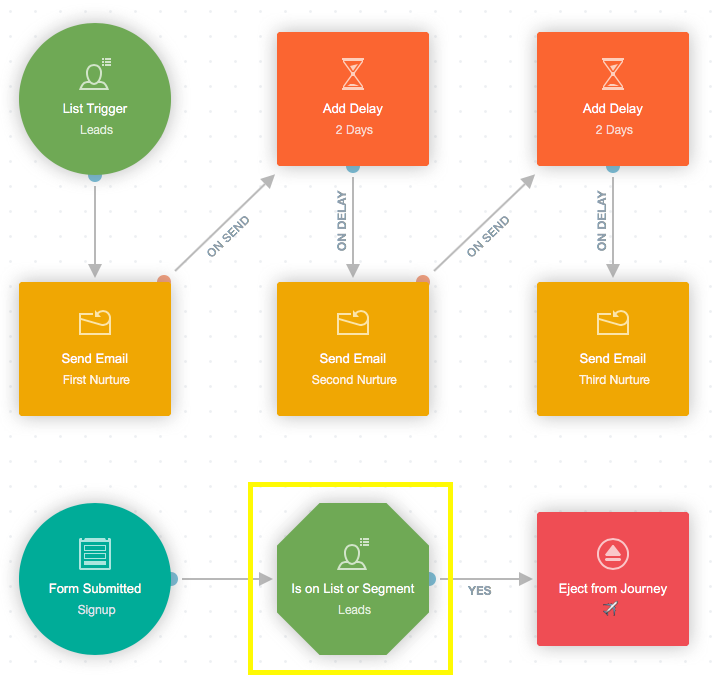
How are ejected contacts reflected in Live View statistics?
Ejected contacts are included in Live View statistics. For example, if a contact was on an Add Delay action when they were ejected, the Live View statistic for that shape will continue to include them, as that is where they ended their Journey.
To see the specific time and date that a specific contact was ejected, you can view their Activity Feed.
